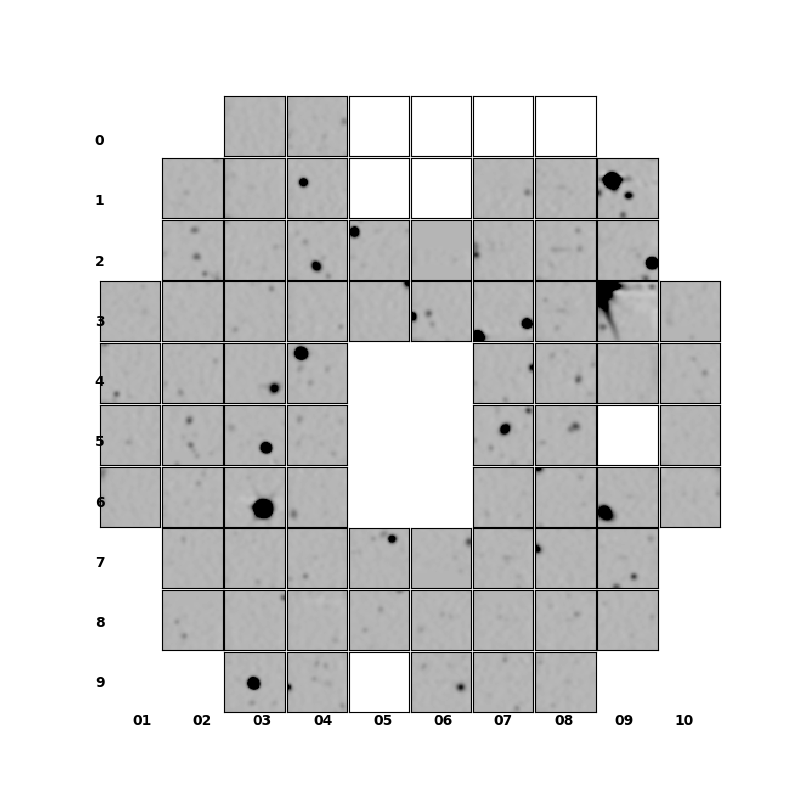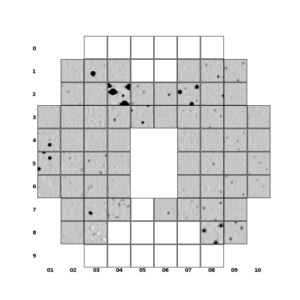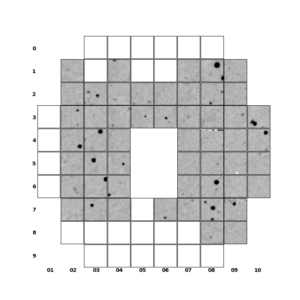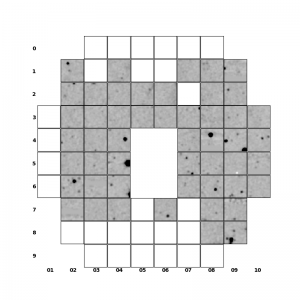This week the VIRUS spectrograph reached another milestone with 70 active units on sky. Below is a reconstructed/magnified image of one observation (the units actually have gaps between them but are shown magnified here). White squares show the locations for 8 remaining units.
Each dithered VIRUS observation now contains 31,000 spectra covering 46 square arcminutes. Next stop: the full 78 units!







